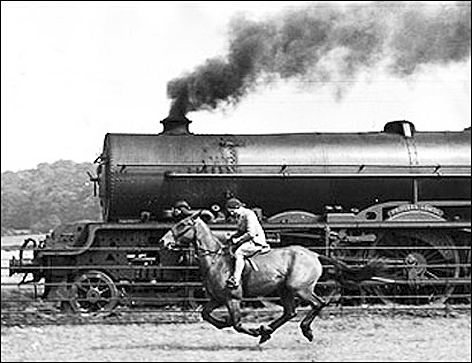The auther, Georg Simmel, is famous as a German sociologist, philosopher and critic. In this article, he discussed and argued the relationship between the metropolis and mental life.
After the enlightenment in eighteenth century, the people tended to aspire after the equality, the liberty and the original natural virtue of man. In nineteenth century, people paid more attention to the individuality and his achievements.
The metropolis which is the centre of money economy always has high speed life rhythem and high rate change. Conversly, the small town usually has smooth rhythem and slower development, being more habitual. Consequently, the condition brings about an attitude of residents who live in metropolis: intellectualistic.
Division of the labor makes the worker more professional and independable, which promote the exchange economy or market economy, which, thereby making almost all the goods can be calculated by currency. The intellectualistic and the money economy effect each other deeply. For example, London has never acted as the heart of England but often as its intellect and always as its money bag in English history.

The revolution destroyed the traditional fabric and established a new type of personal value recognition system.
In the metropolis, the life is transformed into a calculating issue and the relashionships among the people are so complicated. As a consequence, the lack of the most exact punctuality in promises and performances would cause the whole to break down into an inextricable chaos.The residents living in the metropolis usually have a physiological attitude of blasé. This attitude is an indifference toward the distinctions between things being involved in the money economy. For example, it is imporssible for the people to keep connecting to everyone, sometimes they will ignore some of them.On the other hand, the motropolis give a kind of liberty to the residents. Because the metropolitan residents are always exposed to the neighbouring or antagonistic groups, having the biger life circle. On contrary, the small town residents usually have the feeling of narrowness.
When quantitative increase of value and energy has reached its limits, someone will discover the difference in the existing sensitivity.
To present personal characters, people always like to do something unique, fresh, and even exaggerated, such as quatorzieme.

The quatorzieme, In the <Last Supper>, the 13th follower of Jesus is Judas. So in the western culture,13 is usually viewed as unfortunate number. <The Rower’s Lunch> Renoir
In conclusion, Living in the metropolis, there are two forms of mental life, one is “imitation”, the other one is “demarcation”. Because the individuals is a tiny part of the world. In the powerful current of history, a person cannot change anything about it. The huge metropolis machine controls its residents day and night, and only in this way, can our society and city life run well. What we can do is just understanding.Consequently, what should an urban designer do for the metropolis? In my opinion, the problem of mental life cannot be handled by urban designers.It is an complicated issue, to solve the problems needs plenty time and various workers Which part of the work should an urban designer be responsible for? Who will an urban designer cooperate with in such division labor society? They are always the interesting questions and endless controversy.
.



 Northern Architecture
Northern Architecture Project for Public Spaces
Project for Public Spaces Urban Design Group
Urban Design Group
Leave a comment